Few of India's states are as steeped in legend as Rajasthan. With its palaces, temples, forts and festivals, Rajasthan has been a travel destination for centuries. But if you visit only one place here, it should be Jaipur, known as the 'Pink City'. In this two day itinerary of sightseeing in the city, you'll see a royal museum, an ancient observatory, unusual architecture and one of India's most picturesque forts.
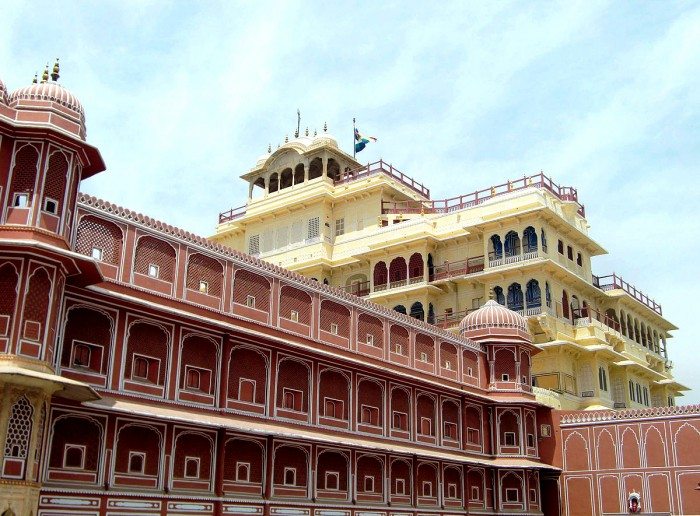
Day One
Start the day at the City Palace, famous as the seat of power for the city's rulers since the 1700s, and still partly occupied by the royal family. The part of the complex open to the public – known as the Maharaja Sawai Man Singh II Museum – is an eye-opening experience and its treasures will take up at least two to three hours, so ensure you get there early (the museum is open daily between 9.30am and 5pm).
As with most large-scale museums, there is a checklist of treasures you shouldn't miss. First is the Diwan-i-Aam (or the Hall of Public Audience) which is on the right as you enter the complex; it was once used as a ceremonial hall but is now home to Mughal and Rajput miniature paintings. Then there's the Diwan-i-Khas (or the Hall of Private Audience) which contains two large silver urns - the world's largest silver objects, according to the Guinness Book of Records.
To the west of Diwan-i-Khas, a narrow passage leads to perhaps the most dazzling of the museum's landmarks - Pritam Niwas Chowk (the Peacock Courtyard), which was built between 1778 and 1803 by Maharaja Sawai Pratap Singh.
The centrepiece of the courtyard is the Peacock Gate which features a painted stucco peacock extruding from the wall. This gate is the most famous of the four gates in the museum complex. Each depicts a season; the Peacock Gate, rather appropriately, represents the monsoon. Turbaned figures in green and gold robes adorn the walls.
You’ll have worked up quite an appetite by now so head to the Palace Café which is located in the museum complex. The prices aren’t as prohibitive as you’d think and there’s plenty of choice including Indian and international options.
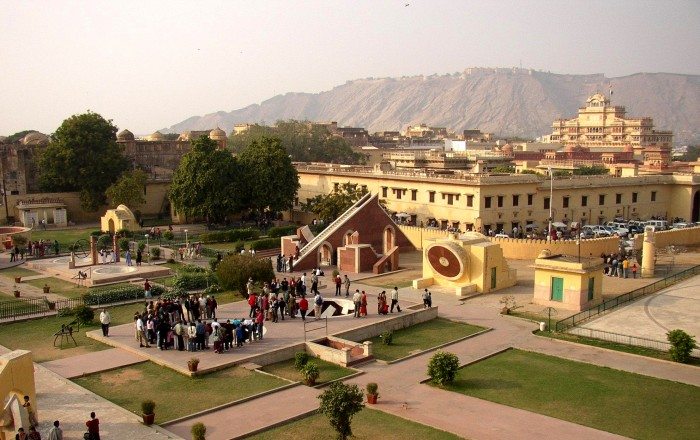
Now head to Jantar Mantar, a royal observatory widely regarded as the best of its kind in India; it is certainly the largest and best preserved, and is a UNESCO World Heritage Sight.
Located within walking distance of the City Palace, Jantar Mantar contains 16 large stone astronomical measuring devices built between 1728 and 1734. Tradition has it that Mughal emperor Muhammad Shah asked Sawai Jai Singh II of Jaipur to revise the calendar and astronomical tables so that the times and movements of the sun, moon and planets could be predicted.
Highlights include the Rashivalaya Yantra, a honey-coloured instrument that consists of 12 pieces, each of which represents a sign of the zodiac. Astrologers valued it as a guide when compiling horoscopes; it’s said to be the only one of its kind.
Another noteworthy instrument is the cylindrical Ram Yantra, which resembles an ancient piece of Roman or Greek architecture, and which is named for Maharaja Ram Singh. Its vertical columns hold up an equal number of horizontal slabs and it is used to measure the altitude and azimuth of celestial objects. Then there’s the Laghu Samrat Yantra, a small sundial that calculates Jaipur time with a margin of error of only 20 seconds.
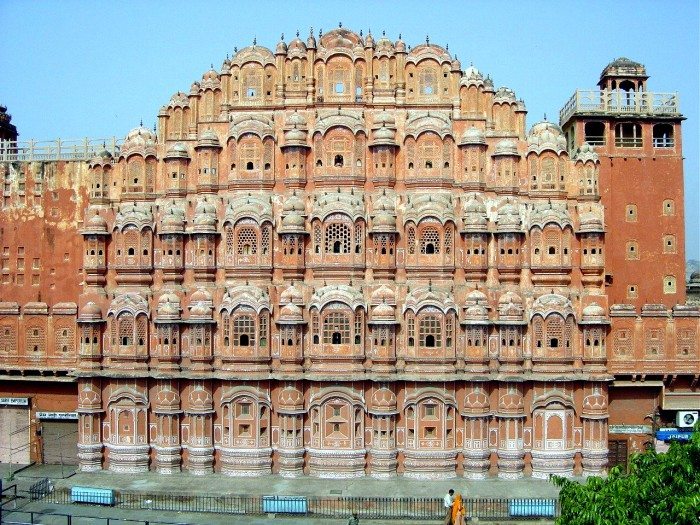
East of the City Palace and Jantar Mantar is Jaipur’s most recognisable landmark, the Hawa Mahal (or Palace of the Winds). The pinkish-orange façade is best viewed in the morning but the interior can be explored daily between 9am and 4.30pm, and the rear façade (seen from the City Palace) is even more fascinating than the front, if not as aesthetically pleasing.
It was from the five-storey Hawa Mahal, dedicated to Lord Krishna, that the women of the royal court observed city life on the streets below while remaining hidden from view. Built in 1799 of lime and mortar, the real surprise of Hawa Mahal is that, despite its height, it is only one room thick. A visit to Jaipur isn’t complete without viewing the palace.
Finish off the day by sampling an Indian meal with local white wine at Hotel Devraj Niwas’ Forresta Kitchen Bar (near the Moti Mahal cinema at Khasa Kothi Crossing).
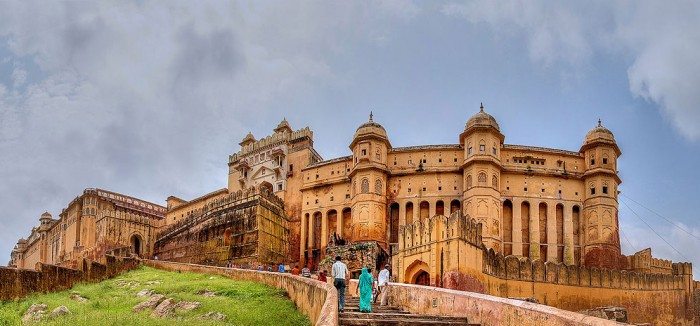
Day Two
Take a public bus or taxi to Amber Fort, located 11 kilometres (about 6 miles) north of Jaipur. The hilltop settlement, with its long, winding fortifications, was the Rajput clan’s stronghold between 1037 and 1727.
Try to arrive as early as possible to avoid the inevitable coach tours; to get to the fort, which is perched on top of a hill, you can walk, hire a jeep or hop atop an elephant. The last option is pricey but undoubtedly the most memorable.
Amber Fort is, from above, laid out in the shape of a hammer with Jaleb Chowk as the head, Man Singh’s Palace as the handle, and the palace proper as the bit in between. Take in the viewpoints of the surrounding ruins as you reach the Tripolia Gate or 'Three Gates' which controls access from the west into the palace. The gate opens in three directions (hence its name).
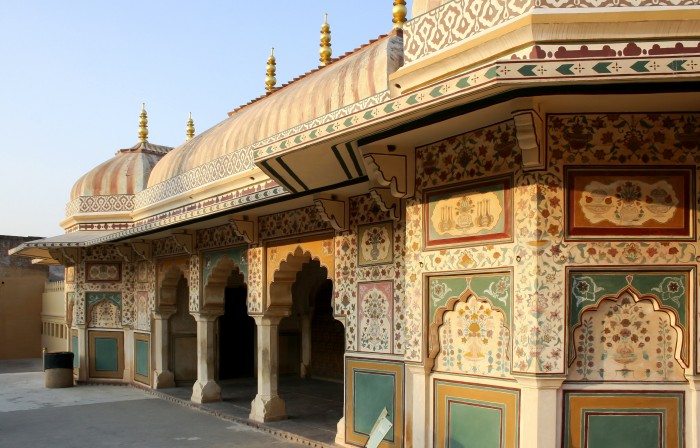
From here it’s a short walk to the rasoda (royal kitchen). The palace had two sets of kitchens, the first adjacent to the dining hall (or bhojanshala) and the other near the Tripolia Gate. The ruler and his guests’ meals were prepared in the dining hall kitchen while the other kitchen was intended for palace staff. Meat and vegetable dishes were prepared in ovens by experienced bawarchis (cooks).
Another feature to look out for at the fort is the zenani deorhi (ladies' apartments) in Man Singh Palace. These apartments were home to the queen mothers and the Raja's consorts; it also housed their female attendants. The royal women often had estates assigned to them, the management of which was executed from these apartments.
About 100 latrines are scattered around the palace; they were supplied with hot and cold water and lit torches provided light at night. Then there was the tunnel, used to conceal movement or to allow escape if the palace was under heavy siege.
After a day of sightseeing at the magnificent citadel, head back to Jaipur for dinner at Spice Court (Hari Bhawan, Achrol House in Jacob Road), which offers a selection of Indian, Chinese and continental dishes.

